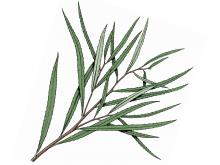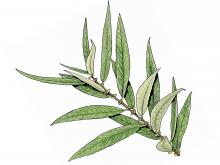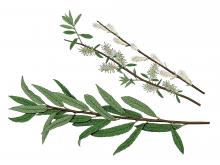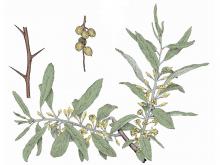Trees, Shrubs and Woody Vines
Media

Species Types
Scientific Name
Maclura pomifera
Description
Osage orange is a densely branched, short-trunked, thorny tree. It bears weird-loooking, softball-sized, chartreuse, brainlike fruits, which often lie beneath the tree in abundance in autumn.
Media

Species Types
Scientific Name
Salix nigra
Description
In some parts of our nation, black willow is only a shrub, but in Missouri it grows quite large. The largest and most widely known of our native willows, black willow is the only member of its family that reaches commercial size.
Media

Species Types
Scientific Name
Salix interior (formerly S. exigua)
Description
Identify sandbar willow by its very narrow leaves with widely spaced, slender teeth along the margins. This is a good soil binder and bank stabilizer; it prevents washing and erosion of alluvial soil.
Media

Species Types
Scientific Name
Salix caroliniana
Description
Ward's willow, or Carolina willow, is one of the first woody species to occupy the outer edges of gravel bars in a stream. Common in the Ozarks, it occurs nearly statewide.
Media

Species Types
Scientific Name
Quercus phellos
Description
Willow oak's leaves are narrow, pointed, and willowlike, and like willows, this oak is associated with wet ground. In Missouri, willow oak is only found natively in our southeastern counties.
Media

Species Types
Scientific Name
Salix petiolaris
Description
A clumped shrub that grows naturally only in the northeastern part of Missouri, meadow willow lives in low, wet ground in mud or sandy gravel along streams and in wet meadows. Rare in our state, it is perhaps best identified by examining the leaves.
Media

Species Types
Scientific Name
Lonicera japonica
Description
Don’t kid yourself about this invasive, exotic vine: Japanese honeysuckle is an aggressive colonizer that shades out native plants and harms natural communities. Learn how to recognize it!
Media

Species Types
Scientific Name
Euonymus atropurpureus
Description
Eastern wahoo is a native shrub or small tree that grows in wooded areas, near streams, and in thickets. In fall, dainty pink or purplish four-lobed fruit capsules dangle from its branches.
Media

Species Types
Scientific Name
Rhamnus cathartica
Description
You might see common buckthorn for sale at a nursery, but don’t buy it! At least six states have banned this invasive exotic, and the difficult-to-control plant is causing problems here in Missouri, too. Learn how to identify it — and avoid it!
Media

Species Types
Scientific Name
Elaeagnus angustifolia
Description
Russian olive is a small tree with distinctive silvery leaves. It was introduced to America in the late 1800s and widely planted as an ornamental and windbreak. But in many states it has proven to be invasive. It is not recommended here in Missouri.
See Also
About Trees, Shrubs and Woody Vines in Missouri
There are no sharp dividing lines between trees, shrubs, and woody vines, or even between woody and nonwoody plants. “Wood” is a type of tissue made of cellulose and lignin that many plants develop as they mature — whether they are “woody” or not. Trees are woody plants over 13 feet tall with a single trunk. Shrubs are less than 13 feet tall, with multiple stems. Vines require support or else sprawl over the ground.





















